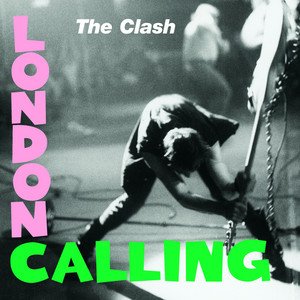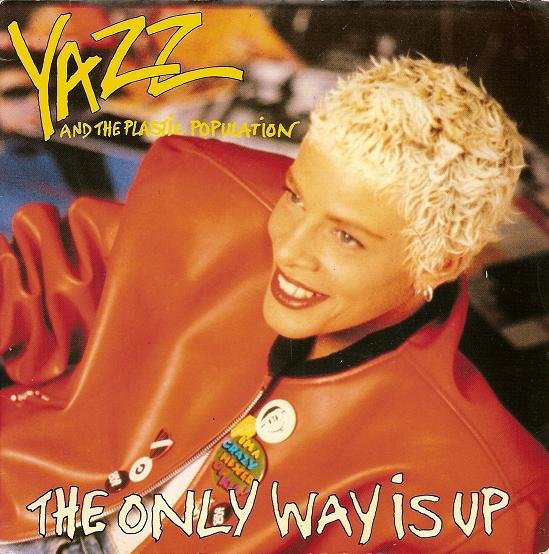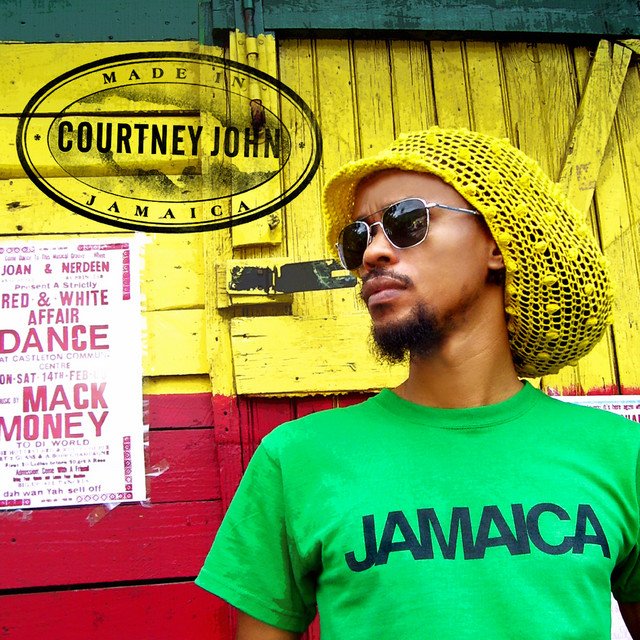THE ASKEW ROAD PLAYLIST
THE ASKEW ROAD PLAYLIST
George Peckings opened his record shop on Askew Road in Shepherd’s Bush in 1973, seeking a quieter environment than Ladbroke Grove, where he first settled after arriving from Jamaica in 1960. Unlike the hustling atmosphere of Ladbroke Grove, George focused on bettering his life through music, building a thriving business. His close friendship with Clement "Coxsone" Dodd of Studio One granted him exclusive access to Jamaican records, making him the main importer of Studio One music in the UK.
This positioned Peckings as a pivotal figure in introducing reggae, ska, and rhythm and blues to British audiences, establishing the shop as a key destination for authentic Jamaican music. The record shop became part of the unique cultural fabric of Askew Road, reflecting the diversity, history, and energy of Shepherds Bush—an area where different communities converge to create something vibrant and ever-evolving.
As Shepherd’s Bush grew into a cultural hub, Peckings’ shop played a vital role in its dynamic music scene, standing alongside other record stores and major labels that had roots in the area. The local streets, markets, and businesses—each with their own character—added to the richness of W12, a place where history, resilience, and creativity intersect. George’s sons, Chris and Duke, continued the legacy by not only running the shop but also producing music that connected with the area’s evolving musical identity. Their collaborations with artists like Bitty McLean and Gappy Ranks further solidified Shepherd’s Bush as a vital center for UK reggae, blending the heritage of Studio One with contemporary sounds.
Askew Road itself is a microcosm of Shepherds Bush, standing as more than just a street—it is a symbol of the ongoing story of W12. Just as Peckings Records became a gathering point for music lovers, the road represents the flow of culture, history, and community that define the area. The Askew Road Arts Festival celebrates this vibrant spirit, honoring the resilience and adaptability of Shepherds Bush, where each corner reflects the diverse voices and energy that shape the area. In this spirit, Chris Peckings has curated a playlist that captures the essence of Shepherds Bush, weaving together the reggae classics and modern hits that tell the story of the area’s rich musical heritage. This playlist stands as a reflection of both the Peckings legacy and the ongoing vibrancy of Askew Road and its ever-evolving community.
THE TRACKLIST
And words from Chris as why they've made the cut...
-

Amos Milburn – "One Scotch, One Bourbon, One Beer" (1953)
When my dad opened Peckings, he sold rhythm and blues. One of the best-selling tracks was Amos Milburn's "One Scotch, One Bourbon, One Beer," a classic from 1953. Before reggae took off, rhythm and blues dominated the Jamaican music scene, which is what my dad initially imported to the shop.
-

The Skatalites – "Lee Harvey Oswald" (1964)
Studio One defined the start of Jamaican music, and The Skatalites played a major role in this. My dad grew up with members of the band, and "Lee Harvey Oswald" was one of the early Studio One tracks sold at Peckings when we started importing records from Jamaica.
-

The Animals – "House of the Rising Sun" (1964)
One of The Animals’ biggest hits, "House of the Rising Sun" (1964), ties into the Shepherd’s Bush area. The band lived in the area, and my personal connection was delivering papers to their house on Tabor Road, which had a gorilla drawn on the door! The song played a part in the broader rock and rhythm and blues culture that Peckings helped promote.
-

Millie Small – "My Boy Lollipop" (1964)
Millie Small, who lived on Blythe Road near Fela Kuti, was a significant figure in early Jamaican music. "My Boy Lollipop," her 1964 hit, was one of the first Jamaican records to achieve international success, and my dad knew her from the early Studio One days.
-

The Who – "My Generation" (1965)
The Who’s connection to Shepherd’s Bush is undeniable. Their track "My Generation," released in 1965, put Shepherd’s Bush on the music map. The band lived in the area, and there's a Blue Plaque for them at the Goldhawk Social Club.
-

Alton Ellis – "Rock Steady" (1967)
The transition from ska to rocksteady was marked by Alton Ellis, the king of rocksteady. His 1967 track "Rock Steady" captures the essence of that shift, a key era in Jamaican music. Studio One was crucial to our early success, and Alton Ellis’s music was at the forefront.
-

Labi Siffre – "It Must Be Love" (1971)
Labi Siffre, who lived on Goldhawk Road, is well-known for his classic "It Must Be Love," released in 1971. The track was later famously covered by Madness, but the original carries a timeless charm. Siffre’s connection to Shepherd’s Bush ties him to the local music scene, which was heavily influenced by nearby Peckings.
-

Fela Kuti – "Water No Get Enemy" (1975)
Fela Kuti lived on Sinclair Road, Shepherd’s Bush. His 1975 track "Water No Get Enemy" showcases his African jazz fusion, a style appreciated even by my dad, who was a jazz fan. Fela’s music, like reggae, was revolutionary.
-

Tetrack – "Let's Get Started" (1978)
In the Roots Reggae era, we worked with artists like Roy Forbes Allen, aka Hawkeye. He produced tracks like Tetrack’s "Let's Get Started," which was released in 1978 and produced by Augustus Pablo. This marked a deeper, more conscious reggae sound that Peckings helped promote.
-

Sex Pistols – "God Save the Queen" (1977)
The Sex Pistols’ "God Save the Queen," released in 1977, shook the nation. Paul Cook, the band’s drummer, lived on Carthew Road, where I used to hang out. The punk movement, much like reggae, represented rebellion and a break from tradition.
-

The Clash – "London Calling" (1979)
Local legends Mick Jones and Joe Strummer of The Clash would visit Peckings, and "London Calling" became an anthem. The track, released in 1979, reflects the spirit of West London’s punk scene, which had deep roots in Shepherd’s Bush.
-

Culture Club – "Do You Really Want to Hurt Me" (1982)
Mikey Craig of Culture Club grew up in Shepherd’s Bush, just off Studland Street. Their hit "Do You Really Want to Hurt Me" from 1982 connects the local area to a more pop-oriented sound that emerged in the '80s.
-

Amazulu – "Too Good to Be Forgotten" (1986)
Amazulu, another band with local roots, saw success with their track "Too Good to Be Forgotten" in 1986. Members of the band still live in Shepherd’s Bush, maintaining a connection to the area’s vibrant music history.
-

John McLean – "If I Gave My Heart to You" (1987)
John McLean, a reggae singer from Hammersmith Grove, recorded the hit "If I Gave My Heart to You" in 1987. Growing up together, we shared a love for reggae music, and his lover’s rock track remains one of the local anthems tied to our upbringing in Shepherd’s Bush.
-

Aswad – "Don’t Turn Around" (1988)
Aswad, one of the most successful British reggae bands, hailed from Shepherd’s Bush. Their 1988 track "Don’t Turn Around" remains a defining moment in British reggae, and Tony Gad, one of the founding members, still lives in the area.
-

Yazz – "The Only Way Is Up" (1988)
Yazz’s hit "The Only Way Is Up," released in 1988, ties back to Shepherd’s Bush, where singer Yazz attended Holland Park School. Her rise to pop stardom reflected the diversity of music connected to the area.
-

Manic Street Preachers – "Askew Road" (2005)
The Manic Street Preachers wrote "Askew Road" after spending time living in Shepherd’s Bush, including on Askew Road itself. The song, released in 2005, reflects their experiences and memories of the area. The lyrics touch on personal struggles and finding solace in a place full of challenges, making the song a poignant ode to their time in Shepherd’s Bush.
-

Gappy Ranks – "Heaven in Her Eyes" (2009)
In 2009, we recorded Put This Stereo On with Gappy Ranks, a Harlesden native. "Heaven in Her Eyes" became a hit, still being played in clubs today. The album was even listed among the top 10 British reggae albums of all time by Red Bull.
-

Courtney John – "Lucky Man" (2010)
Courtney John, nephew of the famous reggae artist Beres Hammond, recorded "Lucky Man" with us in 2010. The track did well, featuring in a Lynx advert and the film The Chef. This track represents how Peckings kept reggae relevant and alive, helping to immortalize our sound.
-

Central Cee – "Obsessed With You" (2021)
Finally, modern artist Central Cee, who hails from Shepherd’s Bush, represents the new generation. His 2021 hit "Obsessed With You" has placed him as one of the UK’s leading rappers, even filming videos locally, solidifying Shepherd’s Bush's place in contemporary music.

